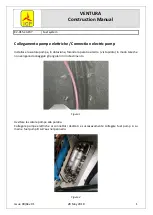
15
MAGIC-MOTOR-manual-EN-1-3
June 2020
6. Recovery Techniques
Stalls
Stalls are dangerous and should not be practised in the course of normal flying. Stalls are caused through flying
too slowly. Airspeed is lost as brake pressure increases and as the canopy approaches the stall point it will start to
descend vertically and finally begin to collapse. Should this occur it is important that the pilot releases the brakes
at the correct moment. The brakes should never be released when the wing has fallen behind the pilot; the brakes
should be released fairly slowly, to prevent the forward dive of the canopy from being too strong. A pre-release
of the brake and the reconstruction of the full span is recommended to avoid the tips getting cravatted during
the recovery. Pilots are advised never to attempt this manoeuvre unless under SIV instruction. This manual is not
intended to give instruction in this or any other area.
Deep Stall (or Parachutal Stall)
Your paraglider has been designed so that it will not easily remain in a deep stall. However, if it is incorrectly rigged
or its flying characteristics have been adversely affected by some other cause, it is possible that it could enter this
situation. In the interests of safety all pilots should be aware of this problem, and know how to recover from it. The
most common way to enter deep stall is from a flying too slowly, from a B-line stall or even from big ears.
When in deep stall the pilot will notice the following:
1.
Very low airspeed.
2.
Almost-vertical descent (like a round canopy), typically around 5m/s.
3.
The paraglider appears quite well inflated but does not have full internal pressure. It looks and feels a bit limp.
6. Recovery Techniques
















































